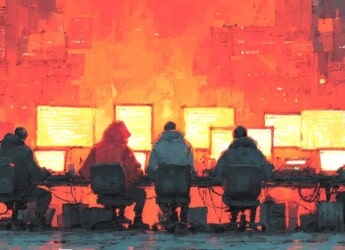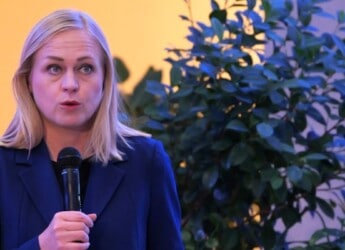Editor’s Note: As Russian missiles struck Ukrainian cities and drone warfare intensified across contested frontlines, U.S. President Donald Trump and Russian President Vladimir Putin convened in Alaska for high-stakes diplomatic talks. The sharp juxtaposition between battlefield escalation and political theater underscores the widening gap between kinetic aggression and international negotiation. With tactical movements near Pokrovsk and Dobropillya, sustained strikes on civilian infrastructure, and strategic messaging from Moscow, this report captures the evolving contours of Russia’s operational posture and Ukraine’s resistance amid unrelenting pressure.
This summary draws exclusively on the August 15, 2025, campaign assessment by the Institute for the Study of War (ISW), whose operational intelligence and geopolitical analyses remain among the most trusted public sources on the conflict.
The report also holds critical relevance for professionals in cybersecurity, information governance, and legal discovery. The increasing use of drones, electronic warfare, and transnational strikes amplifies the importance of securing digital infrastructure and monitoring cross-border data flows in real time. As state and non-state actors engage in information operations and narrative shaping, the preservation, authentication, and forensic analysis of digital evidence—ranging from combat telemetry to public diplomatic statements—are vital for future legal accountability. Understanding the convergence of modern warfare and digital evidence collection enables more effective investigations into war crimes, sanctions compliance, and violations of international law.
Content Assessment: Putin's Intransigence and the Illusion of Peace: War Rages Amid Alaska Summit
Information - 94%
Insight - 93%
Relevance - 93%
Objectivity - 95%
Authority - 96%
94%
Excellent
Russia escalated its military campaign across Ukraine as Trump and Putin met in Alaska. This narrative captures battlefield developments and strategic implications from ISW’s August 15, 2025, update.
Background Note: ComplexDiscovery’s staff offers distinctive perspectives on the Russo-Ukrainian war and Middle Eastern conflicts, informed by their military experience on the West German, East German, and Czechoslovakian borders during the Cold War, as well as in Sinai as part of Camp David Accord compliance activities, during the timeframe of the Persian Gulf War. This firsthand regional knowledge has been further enhanced by recent staff travels to Eastern European countries, including Estonia, Finland, Latvia, Lithuania, and Poland. These visits have provided up-to-date, on-the-ground insights into the current geopolitical climate in regions directly impacted by the ongoing conflict.
Combined with cybersecurity, information governance, and eDiscovery proficiency, this multifaceted experience enables comprehensive analysis of these conflicts, including the critical impact of cyber warfare, disinformation, and digital forensics on modern military engagements. This unique background positions ComplexDiscovery to provide valuable insights for conflict-related investigations and litigation, where understanding the interplay of technology, data, and geopolitical factors is crucial.
Russo-Ukrainian Conflict Update*
Putin’s Intransigence and the Illusion of Peace: War Rages Amid Alaska Summit
ComplexDiscovery Staff
The August 15, 2025, meeting between U.S. President Donald Trump and Russian President Vladimir Putin at Joint Base Elmendorf-Richardson in Alaska was widely anticipated as a potential inflection point in the war in Ukraine. Instead, it became a clarifying moment. While the summit attracted international attention, events on the ground in Ukraine conveyed a more pressing reality: Russia’s war machine continues its campaign with undiminished resolve.
Putin used the platform not to explore diplomatic compromise, but to reaffirm long-standing narratives justifying the full-scale invasion of Ukraine. His remarks echoed the ideological framing of his 2021 essay on the “historic unity” of Russians and Ukrainians, rejecting Ukrainian sovereignty as conditional and dependent on alignment with Moscow. This was not new rhetoric; it was a reiteration of his foundational casus belli—delivered on a global stage.
Trump, for his part, characterized the meeting as “productive,” yet conceded that no agreement had been reached. His brief remarks emphasized communication over resolution, stating that final decisions would rest with NATO and Kyiv. The summit ended abruptly—planned follow-up events were canceled, and no questions were taken, leaving the impression of theater over substance.
Meanwhile, Russia escalated its kinetic campaign. Just hours before the summit, Moscow launched a major drone and missile barrage across northern and eastern Ukraine. Over 97 Shahed-type drones and two Iskander-M missiles targeted multiple oblasts, including Kharkiv, Chernihiv, and Sumy. Civilian casualties were reported, with critical infrastructure—including ambulances and marketplaces—deliberately struck. These actions starkly contrasted with the diplomatic optics in Alaska, and Trump himself remarked that the strikes were likely part of Putin’s effort to “set the stage” for negotiations.
While diplomacy failed to yield movement, Ukraine’s military continued to respond actively along key fronts. Near Dobropillya and Pokrovsk, Ukrainian forces reportedly stabilized Russian advances. Ukrainian sources claimed successful counteroffensives reclaimed several settlements, including Hruzke and Zolotyi Kolodyaz, despite ongoing Russian attempts to consolidate gains with elements of the 51st Combined Arms Army. Tactical success appears to have been achieved, but the cost remains high, and the threat of renewed Russian penetration persists.
The Russian military’s reliance on attritional infantry tactics, involving small, expendable assault groups, continues to define much of the conflict. These approaches were particularly visible near Pokrovsk, where Ukrainian units reported that Russian troops repeatedly assaulted positions in groups as small as two to six personnel—often incurring heavy losses in the process.
Ukraine, meanwhile, extended its asymmetric strategy by deepening its long-range drone strike campaign into Russian territory. Strikes hit the Syzran Oil Refinery in Samara Oblast and damaged the Port Olya-4 vessel in Astrakhan, reportedly carrying Iranian-supplied drone components. The targets were not symbolic—they were core logistical and energy nodes supporting Russian military infrastructure. Such operations highlight Kyiv’s expanding capacity to project force beyond its borders and disrupt Russian sustainment capabilities.
In southern Ukraine, fighting persisted without decisive changes, though Russian forces claimed minor gains near Velykomykhailivka and within the Zaporizhia front. In Kharkiv and Luhansk Oblasts, attacks were reported but largely repelled. Russian airborne and spetsnaz units remained active, particularly around Lyman and Sumy, where Ukrainian counterattacks and drone targeting complicated Russian logistics and troop movements.
Strategically, the week’s events reinforced a now-familiar pattern: while diplomatic overtures suggest openness to negotiation, battlefield activity reveals the opposite. Putin’s language, military deployments, and escalation of strikes all point to a Kremlin position that remains maximalist in both rhetoric and action. For Ukraine, and for the international community, this reaffirms that the path to peace cannot be based on illusions of compromise.
At the same time, these developments sharpen the imperative for cyber and legal experts to document, verify, and archive wartime conduct. As the lines between conventional combat and digital warfare blur, the role of cybersecurity and forensic evidence management becomes central—not only for real-time intelligence but for future accountability.
As Ukraine continues its dual effort to defend terrain and document transgressions, and as Russia maneuvers both militarily and diplomatically, a critical question remains: can international diplomacy keep pace with a war increasingly defined by technological escalation, ideological rigidity, and deeply embedded narratives of conquest?
Detailed Reporting with Maps for August 15, 2025, from the ISW – Mouseover to Scroll
Russo-Ukrainian War August 15 2025-UpdateReview the Detailed Reporting and Maps PDF
About the Institute for the Study of War Research Methodology
ISW’s research methodology relies on both primary and secondary sources, enabling researchers to develop a comprehensive understanding of the situation on the ground. In order to analyze military and political developments in any given area, ISW’s research analysts must wholly understand the systems of enemy and friendly forces. They must also understand the population demographics, physical terrain, politics, and history of that area. This lays the analytical foundation for understanding the reasons for particular developments and fulfilling their assigned research objectives. ISW analysts also spend time in places like Iraq, Afghanistan, and elsewhere in order to gain a better understanding of the security and political situation and to evaluate the implementation of current strategies and policies. Their researchers compile data and analyze trends, producing a granular analysis of developments in areas of research, producing an accurate, high-resolution, timely, and thorough picture of the situation. ISW’s research methodology guarantees its success and commitment to improving the nation’s ability to execute military operations, achieve strategic objectives, and respond to emerging problems that may require the use of American military power.
About the Institute for the Study of War
The Institute for the Study of War advances an informed understanding of military affairs through reliable research, trusted analysis, and innovative education. They are committed to improving the nation’s ability to execute military operations and respond to emerging threats in order to achieve U.S. strategic objectives. ISW is a non-partisan, non-profit, public policy research organization.
Learn more, get involved, and contribute today.
Assisted by GAI and LLM Technologies
* Sourced and shared with direct expressed permission from the Institute for the Study of War (ISW).
Additional Reading
- From Dissent to OSINT? Understanding, Influencing, and Protecting Roles, Reputation, and Revenue
- Data Embassies: Sovereignty, Security, and Continuity for Nation-States
Source: ComplexDiscovery OÜ



























